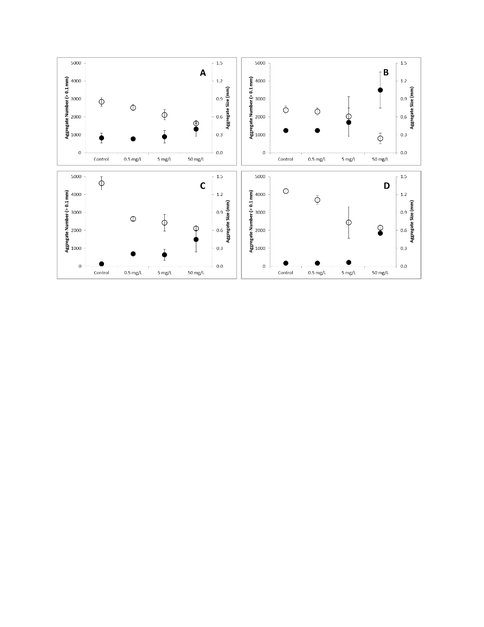2013 Annual Science Report
 Arizona State University
Reporting | SEP 2012 – AUG 2013
Arizona State University
Reporting | SEP 2012 – AUG 2013
Stoichiometry of Life - Task 4 - Biogeochemical Impacts on Planetary Atmospheres
Project Summary
Oxygenation of Earth’s early atmosphere must have involved an efficient mode of carbon burial. In the modern ocean, carbon export of primary production is dominated by fecal pellets and aggregates produced by the animal grazer community. But during most of Earth’s history the oceans were dominated by unicellular, bacteria-like organisms (prokaryotes) causing a substantially altered biogeochemistry. In this task, we experiment with the marine cyano-bacterium Synechococcus sp. as a model organism and test its aggregation and sinking speed as a function of nutrient (nitrogen, phosphorus, iron) limitation. So far, we have found that these minute cyanobacteria form aggregates in conditions that mimic the open ocean and can sink gravitationally in the water column. Experiments with added clay minerals (bentonite and kaolinite) that might have been present in the Proterozoic ocean show, that these can accelerate aggregate sinking.
Project Progress
During this past year, we have successfully formed visible (>0.1 mm up to 1.5 mm in diameter) aggregates of the Synechococcus in roller tanks with a new rolling set-up. We have also refined our methods to characterize and quantify those aggregates (number, size, sinking velocity, etc.) using a new particle sizer (Beckman-Coulter Multisizer III). We are currently investigating the effects of the clays kaolinite and bentonite in a series of concentrations on Synechococcus aggregation at two initial cell densities in roller tanks. We observed aggregate sinking velocities of around 400 m/d without, and up to 800 m/d with ballasting clays. We also compared the effect of two clay types (at the same initial cell density) using paired T-tests. Aggregates formed with kaolinite had greater number (significant at the 107 initial cell density) and smaller sizes (significant at both initial cell densities) compared to those formed with bentonite (Refer to Figure 1). These experiments will enable us to observe Synechococcus aggregation and carbon export potential under different environmental conditions both in the Proterozoic and extant oceans. Additionally, following input from collaborator Watson Gregg, we made progress during this summer in collaboration with Dr. Stephen Romaniello and former SESE undergraduate Benjamin Brugman to refine a Matlab routine to be able to use parameters obtained in the laboratory experiments to model differences in carbon export, as a function of aggregate sinking rate.
-
PROJECT INVESTIGATORS:
-
PROJECT MEMBERS:
Ariel Anbar
Co-Investigator
Ben Brugman
Collaborator
Wei Deng
Collaborator
Watson Gregg
Collaborator
Logan Monks
Collaborator
Uta Passow
Collaborator
Stephen Romaniello
Collaborator
-
RELATED OBJECTIVES:
Objective 4.1
Earth's early biosphere.
Objective 4.2
Production of complex life.
Objective 5.2
Co-evolution of microbial communities
Objective 6.1
Effects of environmental changes on microbial ecosystems
Objective 7.2
Biosignatures to be sought in nearby planetary systems
